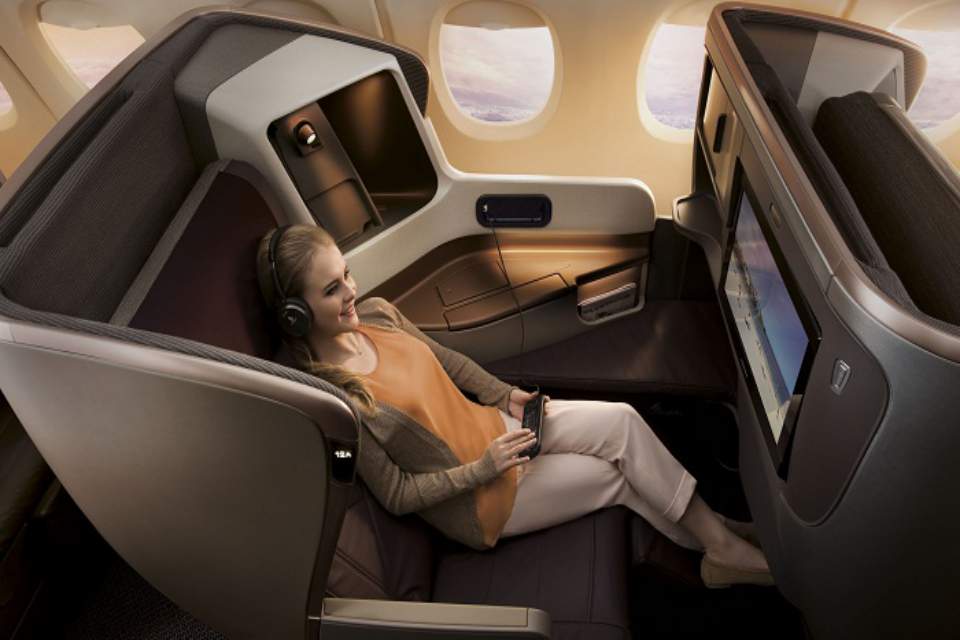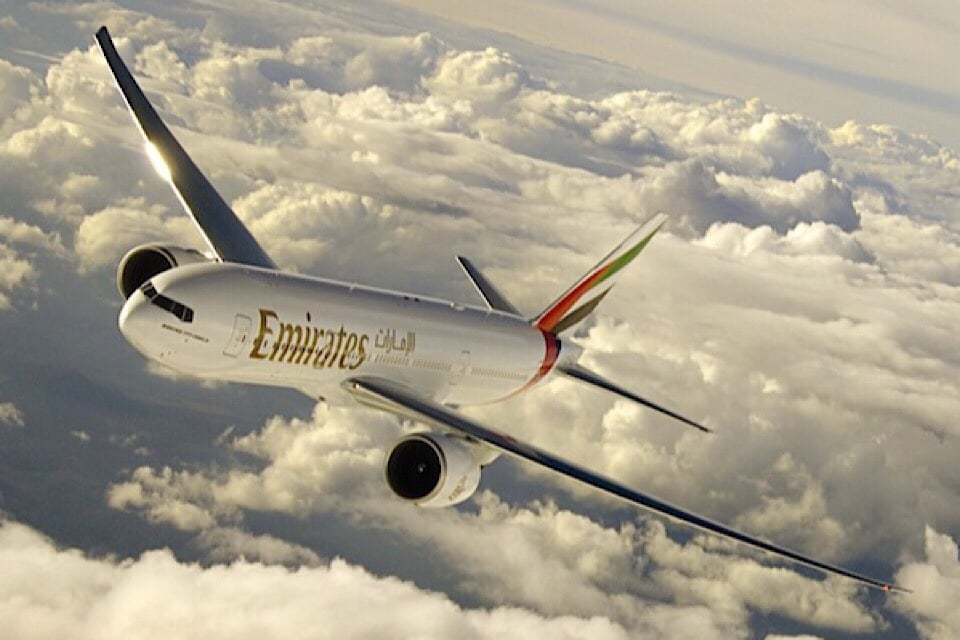Aviation
The 9 Most Luxurious First Class Airlines 2015

1. Etihad Airways



First Suite: Etihad is proud to redefine First Class with a luxurious travel experience, so exquisite and personal, that it is like being transported to a private universe.
Enjoy uncompromised privacy behind closed doors and exquisite features such as a Poltrona Frau leather seat, stylish fabric and finishes, and ambient lighting. Each First Suite has a personal wardrobe, chilled drinks cabinet and space that allows you to entertain another guest.Our signature bedtime turn-down service offering stylish loungewear and the comfort of all-natural mattresses and duvet, cotton sheets and pillows, enables relaxation and comfort.

On Board Dining : Our award-winning Inflight Chefs and Food & Beverage Managers are recruited from the finest restaurants around the world. They undergo extensive training to understand the taste of wine and fusion of flavours for the creation of our menus.
They have an informed opinion on everything that makes for a satisfying meal: tasty food, good wines and the way to get the best of both. Relish the taste of the freshest ingredients that go into making our classic dishes and be assured of the impeccable quality of our food and beverages.
2. Emirates:
Emirates is delighted to provide a luxurious First Class experience that goes above and beyond traditional air travel. Enter a world of unmatched luxury where travellers can enjoy complete privacy in their own private suites. Savour the elegance of a Poltrona Frau leather seat, elegant finishes and fabrics, and mood-setting ambient lighting.
3. Japan Airlines
Japan Airlines elevates First Class to unprecedented levels of refinement. Experience the height of sophisticated travel in quiet areas with well-chosen furnishings. Luxurious features that redefine comfort include ambient lighting, plush seating, and amenities. Savour the renowned bedtime turn-down service, which provides opulent loungewear, and all-natural mattresses for a peaceful sleep. Enjoy the culinary artistry of talented chefs who have been trained to create flawless flavour combinations that turn every meal into a culinary work of art.
4.Lufthansa: The airline’s First Class offers an unparalleled in-flight experience through a tasteful fusion of elegance and innovation. Experience the maximum privacy in thoughtfully planned areas with elegant interiors and state-of-the-art facilities. Expert chefs have created a symphony of flavours that are carefully matched with a selection of the best wines for the onboard dining experience.
5.Qantas
Qantas takes First Class travel to new levels by providing passengers with a journey that expertly combines comfort and sophistication. Discover private rooms that feature well chosen design features, such as smooth leather sofas and soft lighting.
6. Swiss
On long-haul flights, Swiss International Air Lines offers first class armchairs that can be configured as a lounge armchair, a table for two, or a 6.5-foot-long bed with a mattress and privacy walls.
7.Korean Air
There are several seat options available in Korean Air’s first class cabins. The Kosmo Suites 2.0 come with a 79-inch seat, a 9.4-inch partition, and an internal sliding door that is see-through. The Kosmo Suites feature a footrest, one-touch positional controls, and adjustable back support. They measure 26.5 inches in width. Savour the attentive service of the onboard chefs as they craft a delectable meal that entices the senses.
8. ANA (All Nippon Airways)
First class passengers on ANA (All Nippon Airways) have access to a cabin that resembles a private room with plenty of storage space, leather-toned dining and cocktail tables, and comfy seating.
9.Thai Airways
With its First Class service, Thai Airways invites travellers to experience the height of in-flight luxury. A flute of chilled champagne and caviar is served to guests as soon as they board Thai Airlines’ Royal First Class. The newly renovated Boeing 747s and Airbus A380s have semi-private suites with seats that are nearly eight feet long and 23 inches wide on the 747s and 27 inches wide on the A380s.

Aviation
South Korea Introduces Cutting-Edge MRO Center for F-35 and IAI

South Korea is set to make waves in the aerospace industry with the establishment of a cutting-edge Maintenance, Repair, and Overhaul (MRO) hub for F-35 fighter jets and IAI (Israel Aerospace Industries) aircraft.
Central to this initiative is the specialization in converting Boeing 777-ERSF, colloquially known as the “Big Twin,” from passenger to freighter configurations. Under the terms of the agreement, IAI will spearhead the conversion of six B777-300ER and B777-200LR aircraft annually, commencing in 2024. This strategic move is in response to the anticipated surge in demand for wide-body freighter aircraft capable of long-haul flights.
Furthermore, South Korea’s forward-looking vision extends beyond aircraft conversion, with plans to establish a Lockheed Martin F-35 maintenance, repair, and overhaul depot at Cheongju Air Base by 2027. This strategic move not only enhances the operational readiness of South Korea’s air force but also positions the nation as a regional hub for F-35 maintenance expertise.
In preparation for this expansion, thirty Republic of Korea Air Force (ROKAF) engineers and technicians are slated to undergo intensive maintenance training in the United States in 2025, a testament to South Korea’s commitment to fostering local expertise and talent.
IAI’s visionary approach to certification and collaboration underscores the potential for transformative change. With plans for the 777-300ERSF certification process set to unfold in Israel, followed by the rigorous scrutiny of regulatory agencies such as the US Federal Aviation Administration (FAA), the stage is set for the ‘Big Twin’ to soar to new heights of success.
In partnership with esteemed entities like STK and Incheon International Airport Corporation, this collaboration promises to unleash a wave of benefits, amplifying the resilience and competitiveness of the Korean aviation sector while catalyzing job creation and economic prosperity.
Aviation
Lockheed Martin Expresses Interest in Joining AMCA Project

Lockheed Martin, a leading global aerospace and defense company, is demonstrating its dedication to strengthening collaborations with India’s research, industry, and academic sectors. With its rich experience in the aerospace industry and renowned for building some of the world’s most advanced jets, Lockheed Martin is now exploring opportunities to contribute to India’s aerospace sector, potentially providing a significant boost to aerospace technology in the country.
Randy Howard, Vice President of Global Pursuits at Lockheed Martin Aeronautics, recently underscored their interest in exploring “advanced transfer of technology opportunities” with Indian partners, signaling a proactive approach towards fostering technological exchange and advancement in the aerospace domain.
India has been at the forefront of fighter jet development since the 1970s, having produced its own cost-effective fighter jets and combat helicopters, while continually upgrading to maintain competitiveness on a global scale.
Lockheed Martin stands as a dominant force in the aircraft industry, renowned for developing cutting-edge planes like the F35 and F22, some of the most advanced fighter jets globally. They’ve also contributed to projects like the South Korean KF21 aircraft for defense purposes through collaborations.
Now, Lockheed Martin has set its sights on India’s defense sector manufacturing processes, expressing interest in partnering with India on its most anticipated project, the Advanced Medium Combat Aircraft (AMCA), likely to be a 5th generation fighter jet for the Indian military.
Their proposed collaboration could involve a spectrum of advanced technologies, including the Auto Ground Collision Avoidance System (Auto GCAS), a life-saving technology that intervenes to prevent ground collisions, thus significantly enhancing flight safety for Indian pilots.
Lockheed Martin is extending its expertise to design and develop an indigenous cockpit for the F-21 fighter jets, which India is procuring. This collaboration with Tata also includes the development of fighter jet wings. Established in 2023, this partnership adopts a “Ground Floor Design” strategy aimed at equipping India with an in-depth comprehension of 5th-generation cockpit technology and Man-Machine Interface (MMI) systems.
As India’s Fighter jet program advances with finalized aircraft frame and engine prototypes, Lockheed Martin has expressed interest in joining the project. They see a groundbreaking opportunity in cooperative 5th Generation Fighter Development, potentially expediting the AMCA program’s progress through technology and expertise sharing.
Furthermore, Lockheed Martin is keen on collaborating on large-wing, jet-powered UAV platforms, which could enhance India’s unmanned aerial capabilities.
While discussions are ongoing, and specific collaboration details await finalization, this initiative represents a potentially transformative stride in India’s aerospace self-reliance journey and Lockheed Martin’s strategic engagement with the Indian market.
Aviation
Can Airline Seat Cushions Be Used As Life Jackets?

In the event of an aircraft ditching into water, there’s a common question: Can aircraft seats serve as an alternative to life jackets for flotation? The answer lies in understanding their respective functions.
While seat cushions can provide some buoyancy in water, they are not intended nor certified to function as life jackets. Their primary purpose is to offer cushioning for passengers during flight. On the other hand, life jackets are meticulously engineered to keep individuals afloat in water, equipped with buoyancy materials, secure straps, and reflective elements for visibility. They offer numerous advantages over mere cushions.
While a seat cushion might offer temporary assistance in staying afloat, it’s not a dependable substitute for a proper life jacket during an emergency. It’s crucial to utilize approved safety equipment when near bodies of water. A life jacket, designed to keep a person buoyant for extended periods, offers the rigidity needed for prolonged flotation and allows for easy movement of the arms to navigate effectively.
What fabric is used in aircraft seats?
Seats are meticulously designed to fulfill multiple purposes, ensuring passenger comfort, safety, and protection from unforeseen circumstances like fires and accidents. A typical design incorporates an aluminum frame with blocks of polyurethane foam affixed to it. Additionally, a layer of fire-resistant fabric, such as Kevlar or Nomex, is often applied over this framework, topped with a layer of cloth or leather.
Leather seats, while luxurious, are more expensive compared to traditional cloth seats. The majority of fabrics used in seat upholstery contain at least 90% wool fiber, with the remainder typically consisting of polyamide (nylon). Wool stands out as the primary fiber chosen for commercial airline seating fabric due to its desirable properties and suitability for such applications.
What is the lightest economy seat?
In recent times, airlines have been downsizing seat dimensions to accommodate more passengers, resulting in reduced cushion length and leg space. This contrasts with earlier times when airlines offered more generously cushioned seats and ample amenities.
According to Recaro Seats Company, their SL3710 model represents the lightest economy class seat available, weighing in at a mere 8 kg (17.6 lb.), setting a new standard in aircraft seating.
For individuals weighing more than 350 pounds, fitting into a standard economy-class seat can be a challenge due to the narrower dimensions. Economy seats, also referred to as “coach,” “standard,” or “main cabin” seats, typically range from about 40 to 48 centimeters in width, further emphasizing the need for more accommodating seating options.
























